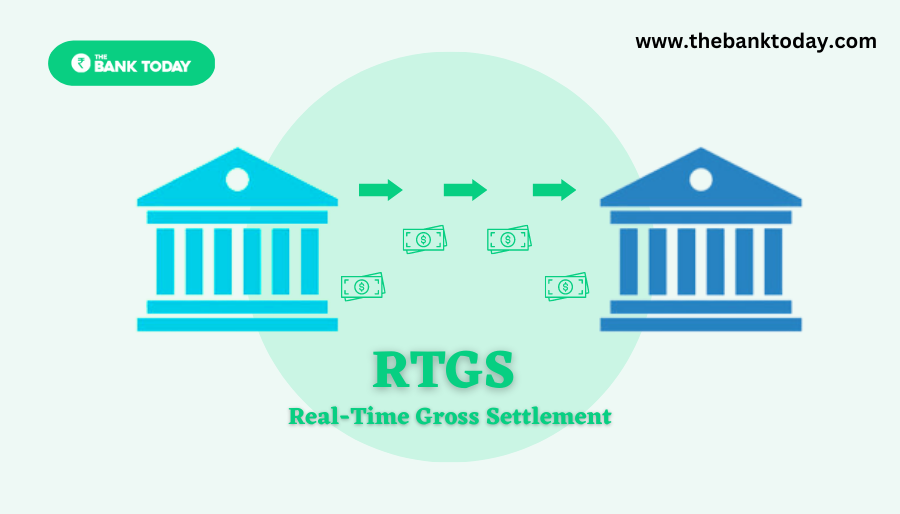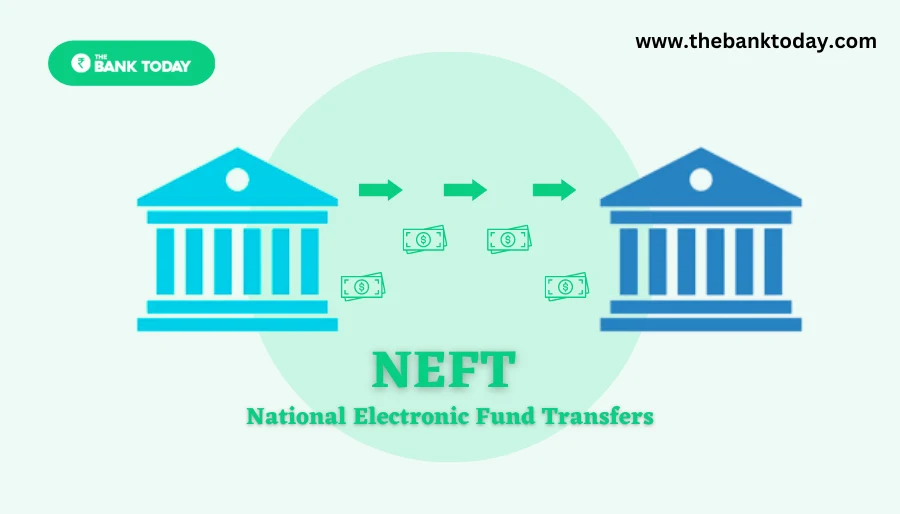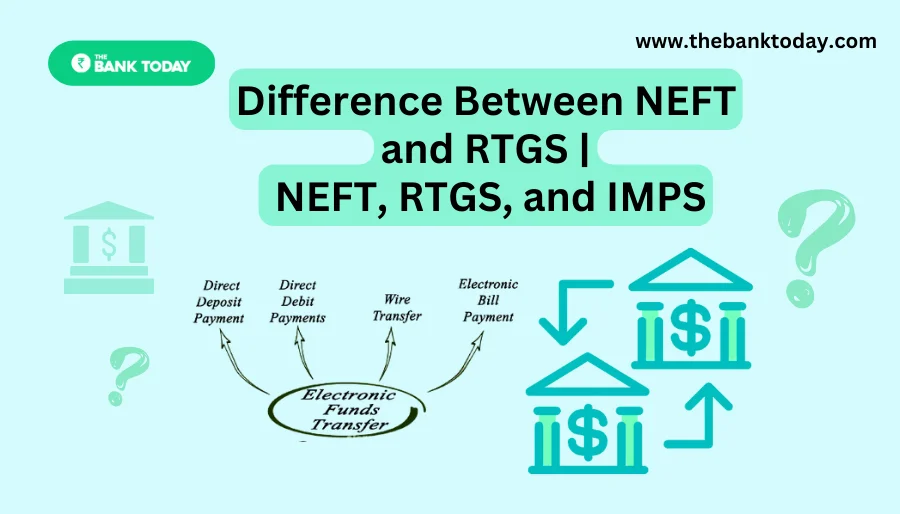Difference Between NEFT and RTGS: Nowadays digital payment system has completely changed the way of financial transactions. Digital Payment system has brought the transaction to the next level. Due to this transactions can be done faster, and more securely. RTGS (Real-Time Gross Settlement) and NEFT (National Electronic Fund Transfer) are the two best and most used digital payment systems in all of India. While both systems are used for online fund transfers, they differ in their features, transaction time, process, transaction limits, transaction fees, access, and use cases.
In this article, we will discuss the complete information about NEFT and RTGS like its importance, advantages, and disadvantages, and in the end, we will learn the differences between RTGS and NEFT. So let’s begin the show.
Contents
- 1 What is RTGS?
- 2 Features of RTGS:
- 3 Advantages of RTGS
- 4 Disadvantages of RTGS
- 5 RTGS Timings
- 6 RTGS Limit and Charges
- 7 What is NEFT?
- 8 Properties of NEFT
- 9 Advantages of NEFT
- 10 Disadvantages of NEFT
- 11 NEFT charges and Fees
- 12 NEFT Charges and Fees of Different Banks in India
- 13 Time set by RBI for NEFT transfer
- 14 Difference between NEFT and RTGS
- 15 Which is better RTGS and NEFT?
- 16 FAQs
- 17 Conclusion
What is RTGS?
RTGS (Real-Time Gross Settlement) is a kind of Digital Payment system which provides the facility to transfer money from one bank to another in real-time. RTGS is the faster and most secure way to transfer money electronically. RTGS was released by RBI (Reserve Bank of India) in 2004 to replace the previous system of Electronic Fund Transfer (EFT).

Features of RTGS:
- In this system, transactions are done in real-time, which means the money gets transferred instantly.
- The system operates based on gross settlement, which means that each transaction is settled separately and is not bundled with other transactions.
- In RTGS, the minimum amount to make a transaction is 2 Lakh and there is no limit for the maximum amount.
- This system is not available only on second and fourth Saturdays, Sundays, and bank holidays.
- Transaction fee/charges for RTGS is higher than other digital payment systems.
Advantages of RTGS
- RTGS is known for the fast and secure transactions of money
- RTGS is very useful for time-critical money transfers means it enables instant money transfers for users.
- This system is very reliable and secure, and in this, the chances of errors or fraud are minimal means no chances of fraud.
- It provides high transparency in the transaction and money settlement process.
- The transaction charges have been capped by RBI.
Disadvantages of RTGS
- The minimum amount to initiate a transaction in RTGS digital payment system is very high. Due to this, it is not possible to send a small amount of money with the RTGS system.
- RTGS system has a minimum amount limit. Which is 2 lakh Rupees for every new transaction that is not possible for individuals and small businesses.
RTGS Timings
Before 14 December 2020, RTGS is not operable every day but after this RTGS is operable every day and it does not have any time limitations which means RTGS is operable 24*7*365.
RTGS Limit and Charges
Transactions are of two types transactions. The first one is Inward transaction which means Banks are receiving the money from the sender bank. And the second one is Outward transactions which means the bank is sending money to another bank.
In Inward transactions, no fees and charges are applied. But in Outward transactions, there is a provision to pay transaction fees and charges which is for transactions between Rs 2 lakh to Rs 5 lakh, charges can not exceed Rs 25 exclusive of taxes. And for transactions above Rs 5 lakhs, the charges can not be more than Rs 50 exclusive of taxes.
RTGS is an ideal digital payment system for big amounts and for time-critical transactions. However, its high transaction fee and minimum transaction limit it is not good options for small businesses or individuals.
What is NEFT?
NEFT (National Electronic Fund Transfer) is a digital payment system that allows individuals, businesses, and companies to transfer money electronically between bank accounts. NEFT is a secure and reliable Electronic Fund Transfer system that helps users to transfer funds/money quickly and easily.

Properties of NEFT
- Transaction processes are done in a bunch of batches, and settlement is done in a span of hours.
- The system operates based on deferred net settlement, which means that all transactions are settled simultaneously at the end of each batch interval.
- In NEFT, there is no limit to the minimum transaction amount. And the maximum limit for transaction amounts varies depending on the bank’s policy.
- This system is not operable on second and fourth Saturdays, Sundays, and bank holidays.
- Transaction charges for NEFT are lesser in comparison to other digital payment systems.
Advantages of NEFT
- NEFT is secure, fast, and reliable for funds transfers.
- There is no minimum limit for fund transfer amount, this means that it is an ideal system for small-amount fund transfers.
- Transaction charges for NEFT are low compared to other digital payment systems, making it a cost-effective option for individuals and small businesses.
- NEFT is widely available and most of the Indian banks provides NEFT facility to users.
Disadvantages of NEFT
- Settlement of transactions is done in fixed time intervals, which is not good for time-critical transactions.
- In the NEFT system, it has limited the maximum amount to transfer, which makes it suitable for small businesses but not for big amount fund transfers.
NEFT charges and Fees
Transaction charges for NEFT vary for different banks. SBI does not charge any transaction charges for online NEFT transfers. But for offline NEFT transfer transaction charges are applied for each transfer. Below is the table for NEFT charges of different banks –
NEFT Charges and Fees of Different Banks in India
| Name of the Bank | Minimum NEFT Charges | Maximum NEFT Charges |
|---|---|---|
| State Bank of India (SBI) | ₹2 + GST | ₹25 + GST |
| HDFC Bank | ₹2 + Applicable GST | ₹10 + Applicable GST |
| ICICI Bank | ₹2.25 + Applicable GST | ₹24.75 + Applicable GST |
| Axis Bank | NIL | NIL |
| RBL Bank | NIL | NIL |
| Canara Bank | ₹2.25 + GST | ₹24.75 + GST |
| IndusInd Bank | ₹2.5 + GST | ₹50 + GST |
| Union Bank of India | ₹2.5 + Taxes | ₹25 + Taxes |
| Bank of Baroda | ₹2.25 + Applicable GST | ₹24.75 + Applicable GST |
| Central Bank of India | ₹2.5 + GST | ₹25 + GST |
| Punjab and National Bank | ₹2 + GST | ₹20 + GST |
| Indian Overseas Bank | ₹1 | ₹19 |
| Bandhan Bank | ₹2 | ₹14 |
| IDFC First Bank | NIL | NIL |
| IDBI Bank | NIL | 25 |
| Kotak Mahindra Bank | ₹2.5 + GST | ₹25 + GST |
| Yes Bank | ₹2.5 + GST | ₹25 + GST |
| South Indian Bank | ₹1.25 + GST | ₹22 + GST |
| Federal Bank | ₹2.5 + GST | ₹25 + GST |
| Bank of India | ₹2.5 + GST | ₹25 + GST |
SBI NEFT charges
| NEFT transfer amount | Online NEFT charges | Offline NEFT charges |
|---|---|---|
| Up to 10,000 rupees | Zero (0) | 2 rupees + GST |
| 10,000 to 1 lank rupees | Zero (0) | 4 Rupees + GST |
| 1 lakhs to 2 lakhs rupees | Zero (0) | 12 rupees + GST |
| More than 2 lakhs rupees | Zero (0) | 20 Rupees + GST |
NEFT fee of the HDFC
| NEFT transfer amount | Online NEFT charges | Offline NEFT charges |
|---|---|---|
| Up to 1 lakhs rupees | Zero (0) | 2 rupees + GST |
| More than 1 lank rupees | Zero (0) | 10 Rupees + GST |
Time set by RBI for NEFT transfer
In the NEFT system, funds are transferred in a span of half an hour batches, which means funds are transferred every half an hour. The 24 hours of day and night are divided into 48 batches of half hours each. The first batch is from 00:30 AM to 01:00 AM. and the last batch ends at 00:00.
All the transactions happen every half hour they all keep gathering with RBI. Then the payments of all the transactions are done simultaneously. With effect from 16th December 2019, the use of NEFT has become operational 24×7, seven days a week. This service is available even on holidays.
Difference between NEFT and RTGS
NEFT and RTGS are the two digital payment systems that are used to transfer money electronically from one bank account to another bank account. Whereas both systems have been built to fulfill the same objective. But they differ in many ways. Here is the Difference between NEFT and RTGS:
Transaction Time and Process
RTGS works on the objective of real-time money transfer. Which means that money gets transferred instantly. Whereas in NEFT, the transaction process is done in batches, and money settlement is done in the span of hours. So, RTGS is a better option for time-important transactions.
Transaction limit
In RTGS, the minimum transaction limit is set at 2 Lakhs of Rupees. Whereas in NEFT, there is no minimum limit for transactions. Additionally, RTGS has no upper limit for transaction amounts. Whereas NEFT has limited the maximum amount o transfer, which is handled by bank rules and protocols. So, we can say that NEFT is best for small businesses and individuals and RTGS is a better option for giant businesses.
Transaction Charges and Fees
In comparison to NEFT transaction charges, RTGS transaction charges are high. RTGS transaction charges are different for different transaction amounts. Whereas NEFT transaction charges are fixed irrespective of the transaction amount. So, NEFT is a better option for small amount transactions.
Easy Access
NEFT and RTGS both are operable on every working day of the Bank. And both are not operable on second and fourth Saturdays, Sundays, and bank holidays. However, RTGS is not available in all banks. Whereas NEFT is widely available in all banks. And in India, most of banks provide NEFT services to their customers.
Use of Time
RTGS is an ideal digital payment system for large-value, time-critical transactions, while NEFT is suitable for small-value transactions that are not time-critical.
NEFT and RTGS both serve different purposes and are suitable for different types of transactions. So, it’s the account holder’s job to consider their transaction requirements including the amount, time-importance, transaction charges, and transaction importance before selecting the RTGS and NEFT digital payment method.
Which is better RTGS and NEFT?
Which digital payment system is better, NEFT and RTGS? This depends on the specific needs of users. Both systems have their own properties, advantages, and disadvantages. And it depends on the user’s need to select the payment system.
If users want to transfer money in big amounts which is time-critical then RTGS is best suited for them. In the second scenario, if the user wants to transfer a small amount of funds then NEFT is suitable for them.
Also, if users want to save transaction charges applied for transactions, then NEFT is a better option for them. Because it has lesser fees in comparison to the RTGS. However, if the user wants to send money instantly with high charges then RTGS is the best option for them.
So, the selection of a digital payment system between NEFT and RTGS depends on the user’s need, transaction amount, time importance, and transaction charges. And both systems are reliable, secure, and widely available.
Also Read:
- What is the Use of Pan Card in 2023? Benefits Explained in a Simple Way
- How to link Pan Card with a Bank account in 2023?
- What is the Use of Pan Card in 2023? Benefits Explained in a Simple Way
- How to check the balance of Chhattisgarh Gramin Bank in 2023
- Application to link mobile number in the bank in 2023
- Application to link Aadhaar card in the bank in 2023
- What is the Difference Between Login Password And Profile Password in 2023?
- How to Create a Net Banking Password in 2023
FAQs
Are NEFT and RTGS available on weekends and holidays?
No, NEFT and RTGS are not available on the 2nd and 4th Saturdays, Sundays, and Bank Holidays. They are available only on the working days of the banks.
Is there any limit on the amount that can be transferred using NEFT?
Yes, NEFT has a maximum transaction limit, which varies depending on the bank’s policy. There is no minimum transaction amount for NEFT.
Which digital payment system is better, RTGS or NEFT?
The choice between NEFT and RTGS depends on the specific requirements of the user, including transaction amount, time-criticality, and transaction charges. Both systems are reliable, safe, and widely used in India.
Can I use NEFT and RTGS to transfer funds internationally?
No, NEFT and RTGS are only available for transferring money between bank accounts within India. For international fund transfers, users can use other digital payment systems, such as SWIFT or PayPal.
What is the transaction time for RTGS?
RTGS transactions are processed in real-time, which means money is transferred instantly.
Conclusion
NEFT and RTGS both are digital payment systems that are used to transfer money electronically between all Indian bank accounts. Whereas both systems serve the same purposes. They both are different in a number of ways, including transaction amount, process, transaction amount limit, transaction charges, and access.
RTGS is an ideal system for big amounts and time-critical transactions. Whereas NEFT is an ideal system for small-amount transactions that are not time-critical. Additionally, in RTGS transaction charges are higher whereas NEFT has a maximum amount limit to transfer, which depends on the bank’s policy.
Both systems are widely available, and most Indian banks provide NEFT and RTGS services. However, the selection between NEFT and RTGS completely depends on the needs, transaction amount, time-importance, and transaction charges.
Therefore, users should consider their specific requirements before choosing between RTGS and NEFT, as both systems are reliable, secure, and widely used digital payment systems in India. If you want to get such new information related to the bank first of all, then search in Google search box thebanktoday.com Thank you!
You can check the RBI guidelines for RTGS and NEFT.

